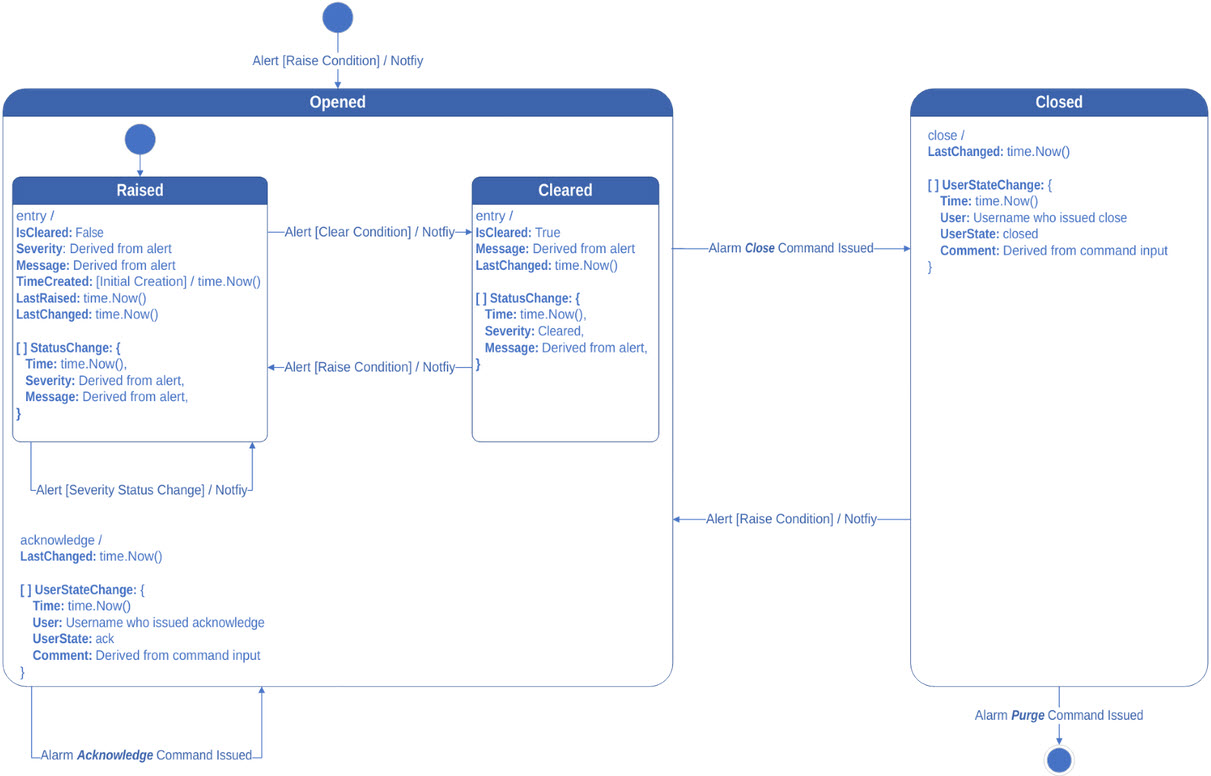Fault Management - Alarms
An alarm is a stateful entity that is raised and cleared solely by the system.
The alarm instance retains a list of time-stamped status changes (such as raising an alarm, updating the alarm severity, and clearing an alarm) as well as a list of time-stamped user state changes (such as acknowledging and closing an alarm). Both change lists have a limited circular buffer of 32 elements and the change history is maintained even after the closing and reopening of an alarm.
In XCO, a cleared alarm is considered an open alarm. You can acknowledge and close alarms or purge all closed alarms.
You can follow the typical alarm operations when investigating and administering alarms.
- Acknowledge: You can acknowledge an open alarm with an optional comment to indicate that the alarm is being investigated. Additional user acknowledgments are allowed and tracked.
- Close: You must close the alarm to remove it from the open alarms. You can provide an optional comment when closing an alarm. The system can raise or clear the alarm but the alarm is still considered opened until you close it. Once the alarm is closed, you cannot close it again or acknowledge it until the system opens and raises the alarm again.
- Purge: All the closed alarms are removed and the associated resources are released.
XCO alarm state transitions


Note
XCO supports a maximum of 500 alarms on TPVM deployments. You must purge the closed alarms manually to allow new alarms.

